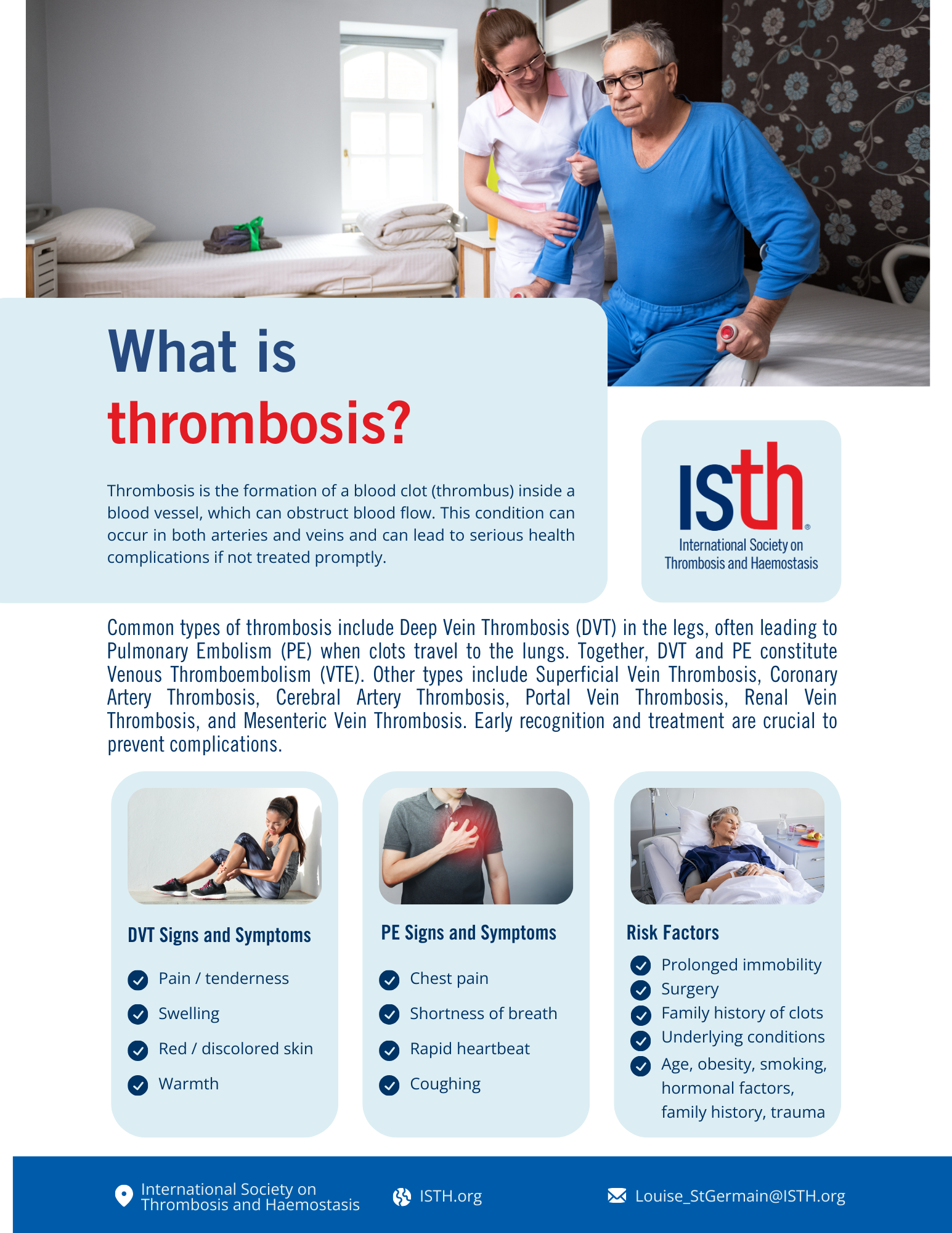International Society on Thrombosis and Haemostasis
Fact sheet: What is hemostasis?
Fact sheet
24 May 2024

Thrombosis is the formation of a blood clot (thrombus) inside a blood vessel, which can obstruct blood flow. This condition can occur in both arteries and veins and can lead to serious health complications if not treated promptly. Common types of thrombosis include Deep Vein Thrombosis (DVT) in the legs, often leading to Pulmonary Embolism (PE) when clots travel to the lungs. Together, DVT and PE constitute Venous Thromboembolism (VTE). Other types include Superficial Vein Thrombosis, Coronary Artery Thrombosis, Cerebral Artery Thrombosis, Portal Vein Thrombosis, Renal Vein Thrombosis, and Mesenteric Vein Thrombosis. Early recognition and treatment are crucial to prevent complications.
Thrombosis is a condition that contributes to the deaths of 1 in 4 people globally each year. The International Society on Thrombosis and Haemostasis (ISTH), a membership organization and non-state actor of the World Health Organization (WHO), works tirelessly to advance the understanding, prevention, diagnosis and treatment of thrombotic and bleeding disorders. This fact sheet provides an overview based on research and documented information. (C) ISTH